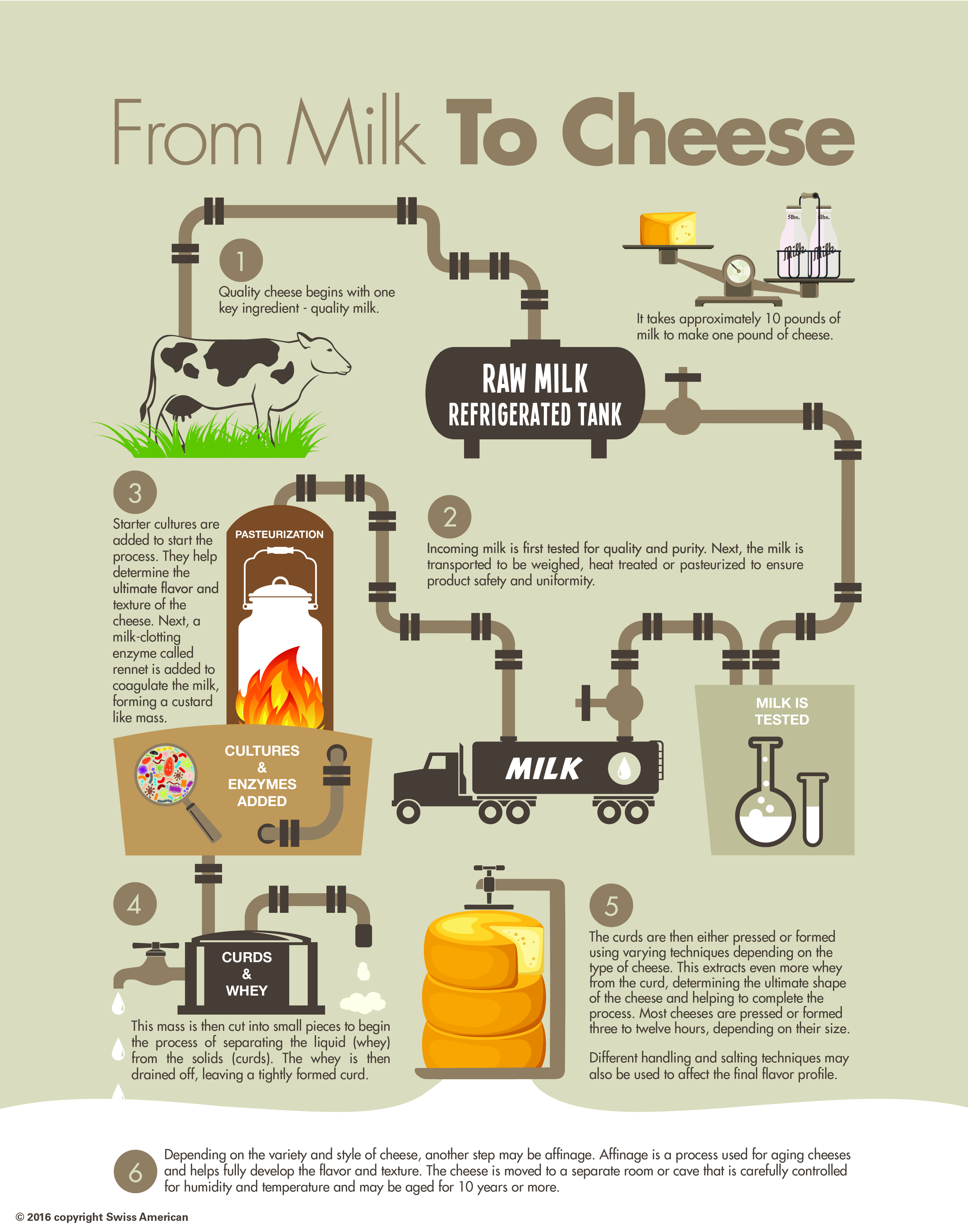From Milk to Cheese
Cheese making takes only a few main ingredients (milk, salt, starter culture and rennet) but the way in which these simple ingredients are combined can yield hundreds of flavor profiles and textures.
Legend will have you believe that the discovery of cheese happened by accident when a nomad stored fluid milk in a pouch made from an animal stomach. The combination of the fluid milk, presence of a stomach enzyme (rennet), the agitation from walking with the pouch, and perhaps some ideal temperature gave birth to what is now one of the most beloved foods. Regardless of how cheese was initially discovered the fact remains that cheese continues to be a popular food with a wide variety of uses. Whether as an ingredient in a dish, a finishing touch on a sandwich or hamburger, or served as part of a charcuterie or antipasti tray, cheese remains a key component in elevating culinary experiences.
So how can 3 (or 4) ingredients combine to make so many different and wonderful combinations? Well, the answer seems pretty simple on the surface, especially if you go back to the origin story. In reality, however, in addition to the ingredients, creating a great cheese takes a little bit of chemistry, quality ingredients, an appreciation for microbes (and a healthy respect for the bad ones ), keen senses, a vision for what you want to produce and how time, temperature, and humidity will help or hurt that vision. Simple right?
The truth is that there are many people who have dedicated the better part of their lives to cheesemaking and in many cases it is true skill and art form. However, there is hope for the rest of us who just want to learn more about this simple yet incredibly complex food. To help convey the journey of milk to cheese we have created this handy infographic. While it really does not take into account all of the subtle nuances of making cheese it does give you the quick and dirty basics.


